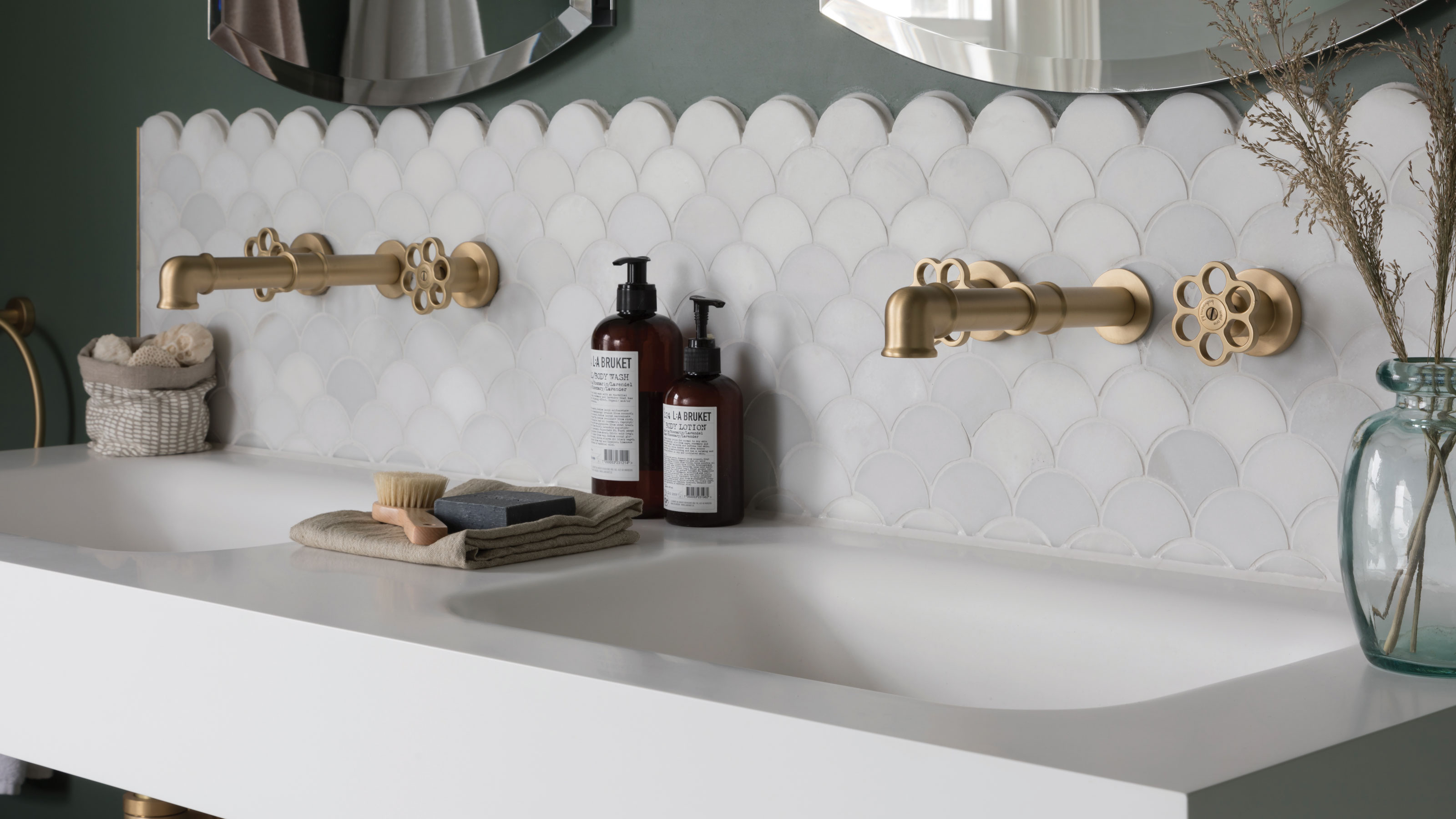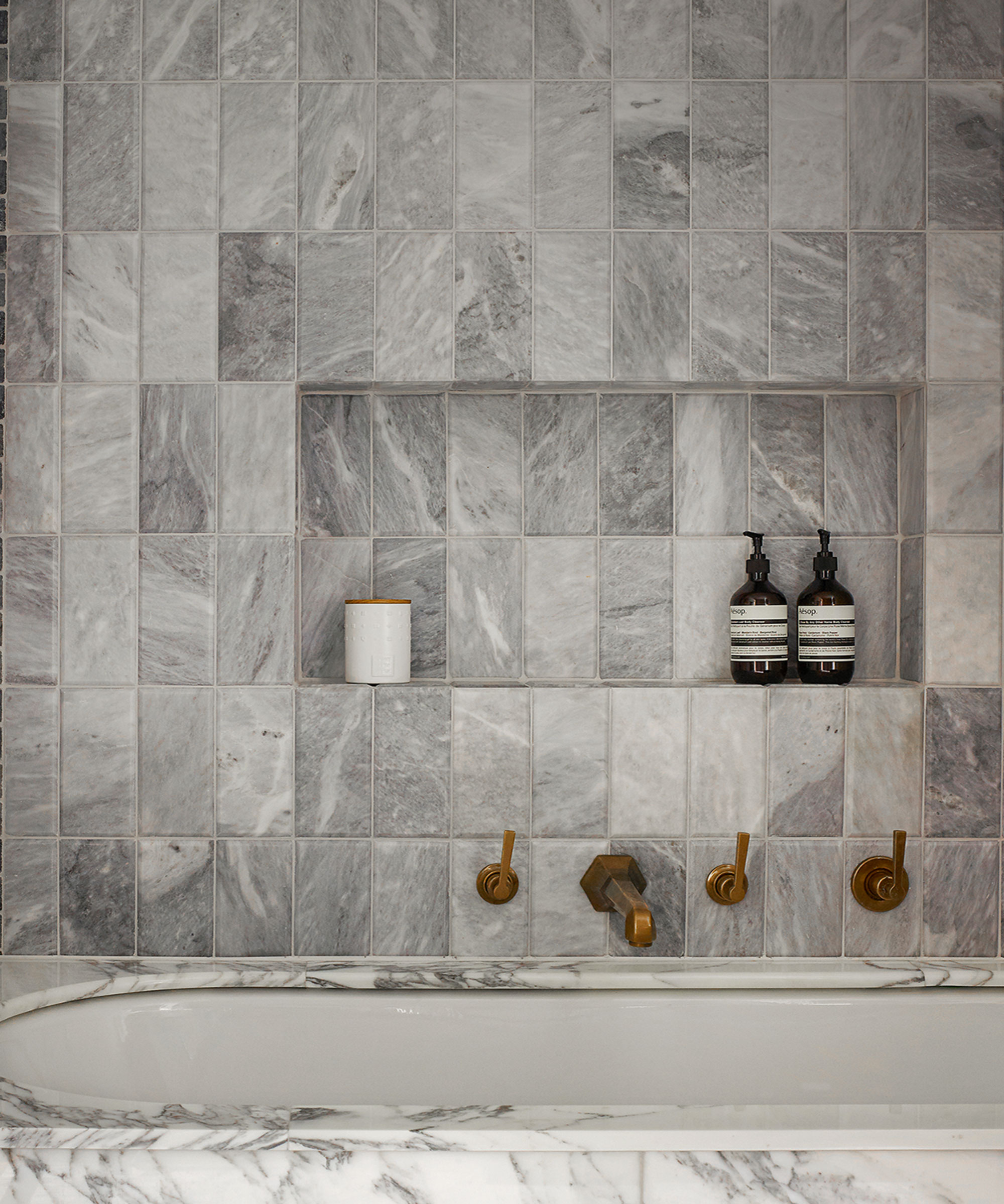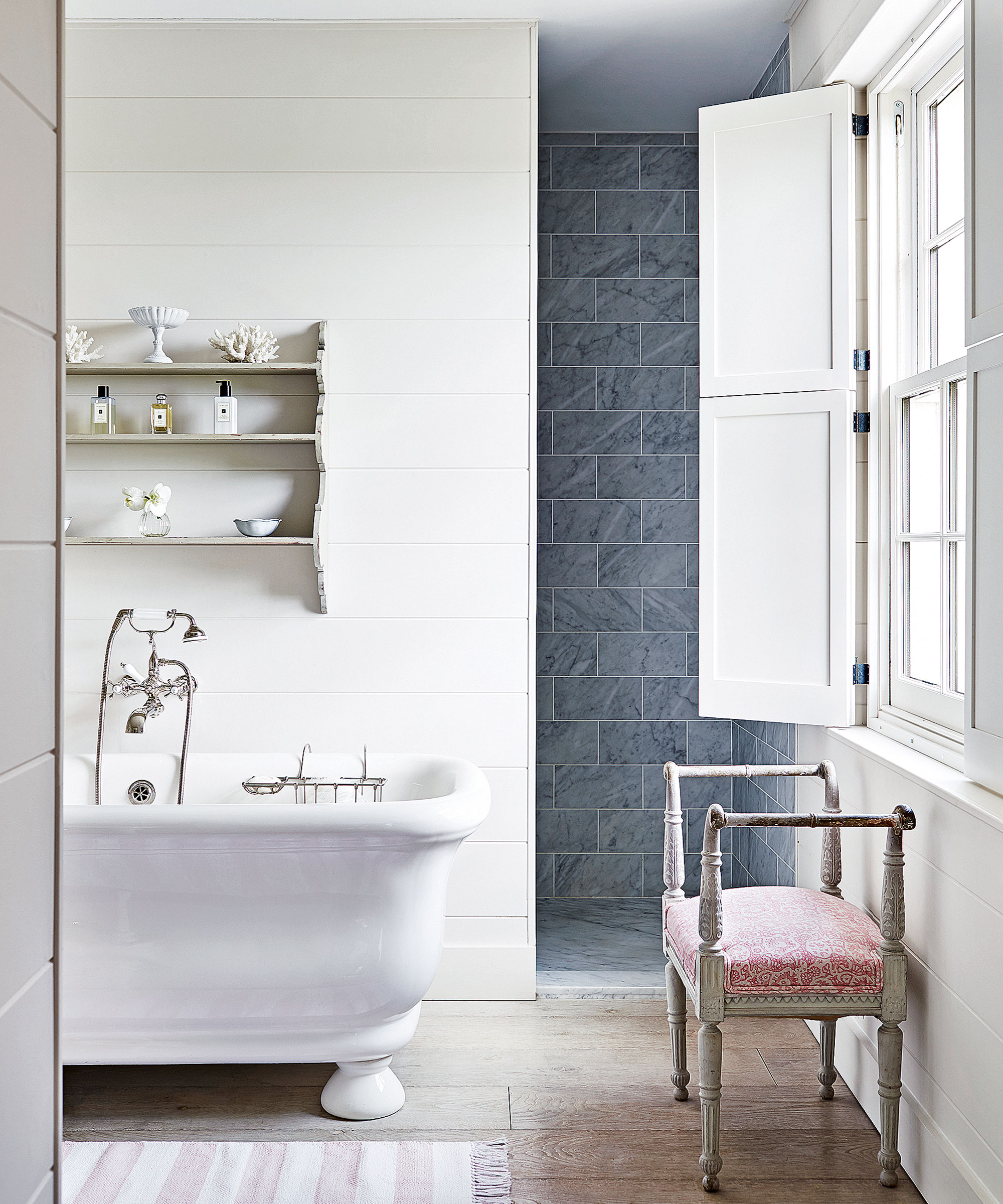How to clean grout – for perfect tile lines
Return grout to its original whiteness with the best, expert-approved methods that banish mold and mildew without causing any damage


Cleaning grout is surprisingly satisfying once you get started, and a great way to make your bathroom feel brand new without spending any money.
Whether the grout around your shower has turned a delightful shade of orange due to shampoo build-up or your floor tiles are in need of cleaning, we have you covered.
Below are the best grout cleaning tips, recommended by cleaning experts, for light stains and deep stains, plus some preventative measures to avoid mold and mildew appearing on the grout in the first place, so your next bathroom cleaning session takes less work.
How to clean grout
The tile itself is easy to keep looking its best, but grout can prove more tricky to deal with because it is porous and prone to staining. Add to that the fact that in the bathroom particularly the humid atmosphere provides mold with the conditions in which it thrives, so it can speckle grout.

1. For light stains
Scrub with warm soapy water
For light stains, it could be sufficient to clean the grout along with the tile itself using nothing but warm water. However, it may need a little more than this and, if that’s the case, make up a solution of water and dish soap and apply using a microfiber cloth, at Amazon or a microfiber mop in the case of floor tile.
If this isn't effective, you can use an old toothbrush or a stiff grout cleaning brush, at Amazon – to work along the lines to clean the grout. Remove any residue by wiping it with hot water.
2. For deep stains
Brush with The Pink Stuff
To take the effort out of removing tough stains, try an alkaline cleaner, such as The Pink Stuff, at Amazon, combined with the stiff brush. This is Homes & Gardens' junior writer Chiana Dickson's favorite method: 'When it comes to grout I love to clean with The Pink Stuff,' she says.
'I use an old, clean toothbrush to scrub the lines with a grape-sized amount of The Pink Stuff paste before blasting away with some cold water and wiping with a clean, dry towel. Cleaning grout this way helps to lift most stains and brighten the grout lines as the mild abrasive works away at built-up grime and dirt.
'I tried it on my old entryway tiles where the grout had turned nearly black and, after a few applications, it was back to a much more attractive light gray shade,' Chiana shares.
There are various specialist grout cleaners out there, too – we also like Grout Eez. Make sure to rinse thoroughly afterward, whether cleaning mold in the shower, or around sinks.
Our contributing editor also swears by an electric scrubber for making tiles and grout sparkle.

Chiana has been at Homes & Gardens for six months, having started her journey in interior journalism as part of the graduate program. She spends most of her time producing content for the Solved section of the website, helping readers get the most out of their homes through clever decluttering, cleaning, and tidying tips – many of which she tests and reviews herself in her home in Lancaster to ensure they will consistently deliver for her readers.
Try a drill bit or shop vac
For a less effortful alternative, you might want to take a lead from house rehab specialist Bill Samuel of Blue Ladder Development and get a drill bit brush, available at Walmart. ‘This will do a much better job of scrubbing the grout clean than you could ever do by hand,’ he comments.
If you’re the owner of a shop vac, this can be a great answer to how to clean grout in floor tile. Apply an alkaline cleaner according to product instructions, then use the shop vac to lift the dirty water, recommends the TCNA. As well as getting rid of the water, the vac will lift the dirt from the grout.
Follow that by rinsing, then use the shop vac again so no soap film is left behind, the experts say.
Use a specialist mold remover
Mold can thrive in the damp conditions of a bathroom and is most often found on grout. If after cleaning the grout as above you’re left with black areas, this is likely to be the culprit. To tackle this, use a specialist mold-removing product for grout.
Thinking about using bleach? Be aware that bleach can discolor grout. It can also weaken it over time, so it’s not the answer.
'If you must use bleach, dilute it with water and use it sparingly,' says Penny Nicholas from Sparkling Penny. 'Alternatively, use hydrogen peroxide, which is a safer and more effective alternative to bleach.'

Penny Nicholas is the professional cleaner behind cleaning blog Sparkling Penny. She aims to be a a go-to source for all things cleaning around the home after learning top cleaning tricks and hacks running her own holiday cottage for over ten years.
Preventative measures
There are lots of ways to reduce moisture levels in the bathroom, which will prevent stains and help you avoid having to remove black mold that has built up over time. Wipe tiles down with an old towel or squeegee when you're finished in the shower, and keep the space well-ventilated by opening a window or using one of the best dehumidifiers. This will also help prevent and get rid of silverfish, which are attracted to moisture.
FAQs
How can I get my grout white again?
To restore grout to whiteness, or its alternative original shade, mix baking soda and water to create a paste and brush gently onto the grout with a toothbrush. Cleaning professional Karina Toner from Spekless Cleaning recommends spraying on white vinegar over the paste to create a bubbling reaction and lift dirt out.
'Additionally, hydrogen peroxide, oxygen bleach, or a commercial grout stain remover can work wonders,' she says.
What do professionals use to clean grout?
The pros tackle grout with special equipment. ‘We professionally clean grout by first inspecting the grout, then pre-spraying heavily stained areas, and then using a high pressure, hot water cleaning process to remove dirt and ground-in soil,’ says Diana Rodriguez-Zaba, president of cleaning company ServiceMaster Restoration by Zaba.
‘We follow this up with a gentle clean water rinse that also extracts excess water. Once the grout is fully cleaned and dried, we typically apply a sealer to make the grout resistant to spills and stains and easier to clean in the future.’
Wondering if you should call someone in for grout cleaning? ‘Hiring a pro can be helpful when your grout is particularly dirty or when you just don’t have enough time to do it yourself,’ says Bailey Carson, home care expert at Angi. ‘Pros also have access to more specialized cleaning tools, like steam mops, that can clean your floors more deeply than you can when doing it by hand.’
You might want to team cleaning grout with cleaning a showerhead as this is another job that needs doing from time to time rather than weekly.
Does vinegar hurt grout?
Cleaning with vinegar isn’t the best choice for grout. The reason is that grout contains cement, which is dissolved by acids, and vinegar is acidic. A strong vinegar solution could therefore be detrimental to the grout – and bear in mind that it can also damage stone tiles.
If you’re using a store-bought cleaner, an alkaline version is what you need – the TCNA suggests products such as Spic and Span or Mr. Clean, or use one of the methods, above. Cleaners to avoid, according to the TCNA, are oil and wax-based versions that leave a film that can attract dirt.
How do you clean grout without ruining the tiles?
'If you're looking for a gentle way to clean your grout, steam cleaning is the best option,' says cleaning expert Penny Nicholas. 'Instead of using harsh chemicals or abrasive scrubbers, steam cleaning uses high-temperature steam to loosen dirt and stains. Plus, the steam kills bacteria.
'The best part? Steam cleaning requires minimal scrubbing.'

As well as looking ugly, the mold spores can be bad for the family’s health, so if you don't delay in tackling grubby grout. If the grout you are attempting to clean is beyond repair, there is the option to renew the grout completely, in which case you will need to learn how to grout tiles.
Sign up to the Homes & Gardens newsletter
Design expertise in your inbox – from inspiring decorating ideas and beautiful celebrity homes to practical gardening advice and shopping round-ups.

Sarah is a freelance journalist and editor. Previously executive editor of Ideal Home, she’s specialized in interiors, property and gardens for over 20 years, and covers interior design, house design, gardens, and cleaning and organizing a home for Homes & Gardens. She’s written for websites, including Houzz, Channel 4’s flagship website, 4Homes, and Future’s T3; national newspapers, including The Guardian; and magazines including Future’s Country Homes & Interiors, Homebuilding & Renovating, Period Living, and Style at Home, as well as House Beautiful, Good Homes, Grand Designs, Homes & Antiques, LandLove and The English Home among others. It’s no big surprise that she likes to put what she writes about into practice, and is a serial house renovator.
-
 Victoria Beckham has a unique formula for perfect bedding: 'Very expensive sheets and cheap pillows' – you can follow her example from $15
Victoria Beckham has a unique formula for perfect bedding: 'Very expensive sheets and cheap pillows' – you can follow her example from $15Victoria revealed she goes for crisp, white bed sheets and pillows with neck support from Target – and you can shop similar buys at an ultra-low cost
By Hannah Ziegler Published
-
 I just discovered the best non-toxic product for getting rid of ants in your yard – and you probably already have it in your bathroom cupboard
I just discovered the best non-toxic product for getting rid of ants in your yard – and you probably already have it in your bathroom cupboardThis household item is an effective ant deterrent that doesn't leach harmful chemicals into your soil
By Tenielle Jordison Published